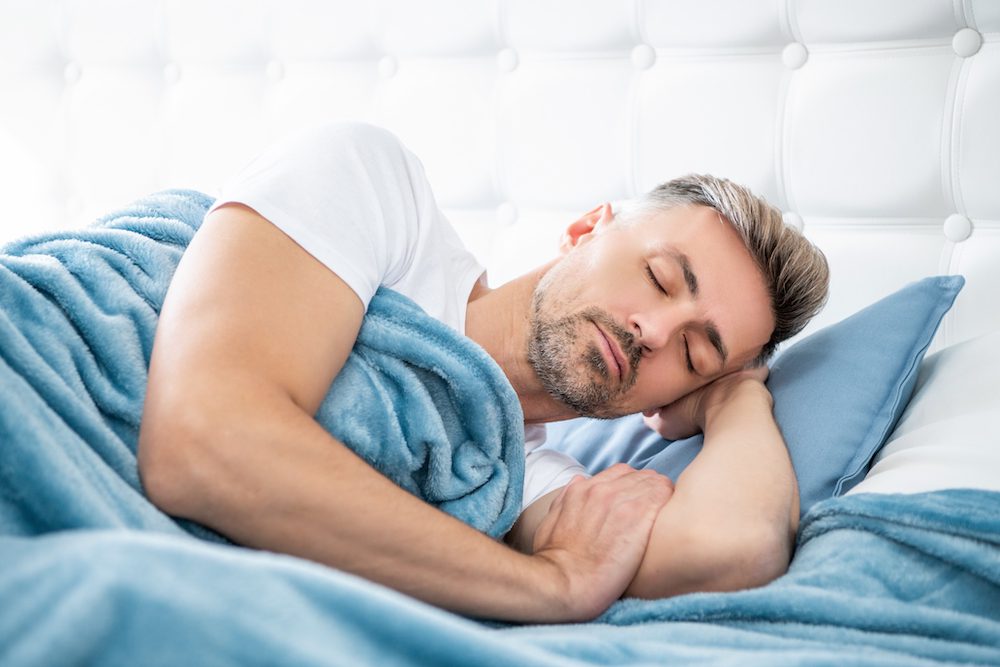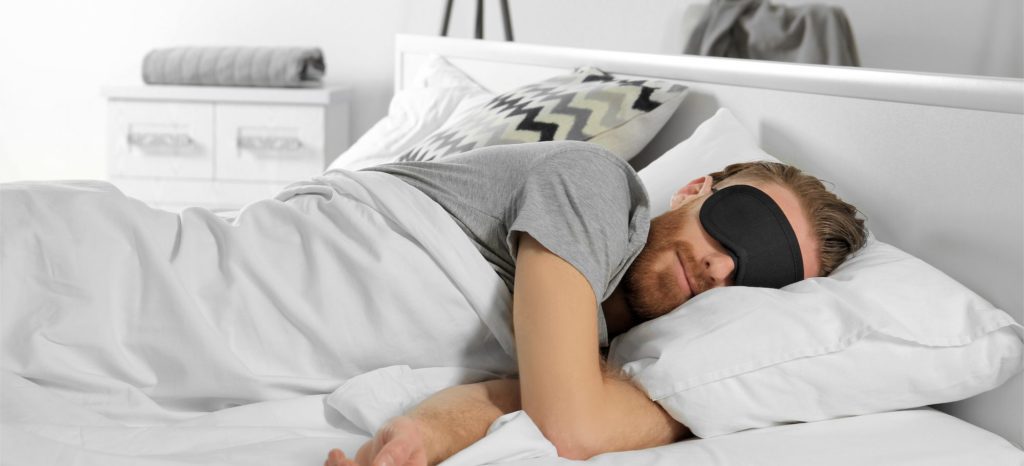Seeing, hearing, or feeling something that is not real can be an unsettling or frightening experience. Hallucinations may be caused by a lack of sleep, an underlying mental or physical health condition, or the use of certain substances.
A hypnopompic hallucination is a specific type of hallucination that occurs right as you are waking up. Around 7% to 13% of people will experience a hypnopompic hallucination during their lifetime.
If you or someone you know experiences hallucinations as they wake up from sleep, it can be helpful to understand what defines a hypnopompic hallucination as well as its possible causes and when to contact a doctor.
What Are Hypnopompic Hallucinations?
Hypnopompic hallucinations are a type of parasomnia, which is a group of sleep disorders that involve unwanted movements, behaviors, or experiences that happen while falling asleep, during sleep, or when waking up.
Hypnopompic hallucinations involve experiencing something that isn’t real immediately after waking up. These hallucinations can involve one or more senses, meaning that you may see, hear, or feel something that is not really present.
Hypnopompic hallucinations are different from dreams. They are also distinct from hallucinations that happen during the daytime or when falling asleep. Episodes of hypnopompic hallucinations are generally harmless, but they can be scary and may even prompt some people to jump out of bed, which can cause an injury.
Hypnopompic Hallucinations vs. Hypnagogic Hallucinations
Both hypnopompic and hypnagogic hallucinations occur at the edges of sleep, but hypnopompic hallucinations happen when waking up while hypnagogic hallucinations happen when falling asleep.
Understanding whether hallucinations occur while waking up, during the day, or when falling asleep may help a doctor identify the underlying cause of these experiences.
Simple vs. Complex Hallucinations
Doctors have various ways of classifying hallucinations. For example, visual hallucinations can be simple or complex.
- Simple Hallucinations: Simple visual hallucinations lack detailed imagery. Simple hallucinations include basic shapes, lines, lights, or colors.
- Complex Hallucinations: Also called formed hallucinations, these experiences involve more fully realized images and scenes, including perceptions of animals, people, or objects.
Classifying hypnopompic hallucinations as simple or complex can help doctors understand what might be causing them. For example, complex hallucinations are associated with narcolepsy, a sleep disorder that is a common cause of hypnopompic hallucinations.
Symptoms of Hypnopompic Hallucinations
The symptom that defines hypnopompic hallucinations is having visual, auditory, or tactile experiences that are not real and occur as a person is waking up.
The content of these hallucinations is often the continuation of a dream that was occurring during sleep. Hallucinations may last from seconds to minutes, and it may be difficult to tell the difference between dreams and hallucinations.
Visual hallucinations are present in over 85% of hypnopompic hallucinations. Visual aspects may be detailed and full of color. Images seen during a hypnopompic hallucination may include:
- Kaleidoscope patterns
- Shapes
- Flashes of light
- Animals
- People
- Scenes
Auditory hallucinations occur in 8% to 34% of hypnopompic hallucinations. Sounds experienced during a hallucination may include:
- Voices
- Sounds from a phone
- Doorbell
- Music
- Words
- People talking
- Animal sounds
Between 25% and 44% of hypnopompic hallucinations involve changes to sensations affecting the body, such as:
- Weightlessness
- Flying
- Falling
- Distortions of the body
- Perceived presence of another person in the room
While fear is not a necessary symptom of hypnopompic hallucinations, many people find these experiences to be frightening. The majority of people are aware that the hallucinations are not real, but unsettling hallucinations may still provoke fears related to sleep.
What Causes Hypnopompic Hallucinations?
Hypnopompic hallucinations can be caused by a lack of sleep, certain sleep disorders, a variety of substances, and some mental and physical health conditions.
Many researchers believe that these hallucinations are the dreamlike experiences of REM sleep continuing into wakefulness. Rapid eye movement (REM) sleep is one of the two types of sleep that people cycle through each night, and most dreams occur during REM sleep.
Hallucinations are created in the brain and have many possible causes. They may occur when using or withdrawing from certain substances such as cannabis, LSD, alcohol, and medications that affect the pattern of sleep stages.
Hypnopompic hallucinations are often associated with narcolepsy, a rare disorder that involves daytime sleepiness. People with narcolepsy have disrupted sleep-wake cycles that affect REM sleep and may cause symptoms like sudden muscle weakness, sleep paralysis, and hallucinations.
Although hallucinations that occur on the edges of sleep are often related to narcolepsy, insomnia, or lack of sleep, hypnopompic hallucinations can also be associated with other conditions including:
- Delirium
- Dementia
- Fever
- Epilepsy
- Anxiety
- Schizophrenia
- Depression with psychosis
- Brain cancer
- Blindness
- Deafness
- Liver failure
- Kidney failure
- HIV/AIDS
- Guillain-Barré syndrome
Hypnopompic hallucinations sometimes occur during sleep paralysis, an experience in which a sleeper wakes up but is unable to move. As many as 20% of people have very infrequent episodes of sleep paralysis, while many people with narcolepsy have episodes more regularly.
How Common Are Hypnopompic Hallucinations?
Estimates vary, but it is believed that around 7% to 13% of people experience hypnopompic hallucinations. Hallucinations may be under-reported because some people may not realize they are having hallucinations or may not tell their doctor about them.
Hypnopompic hallucinations are more common in younger people, women and people assigned female at birth, and in people with certain mental and physical health conditions. For instance, as many as 38% of people diagnosed with narcolepsy experience hallucinations when waking up.
Hypnopompic Hallucinations and Mental Health Conditions
Although people with mental health conditions can experience hypnopompic hallucinations, having brief hallucinations when waking up does not mean that a person has a mental health condition.
When diagnosing the cause of hallucinations, doctors take a variety of factors into account including a person’s symptoms, health history, and the result of medical and psychological tests.
There are several key differences between hallucinations experienced by people with and without a mental health condition.
- Insight: The majority of people experiencing hypnopompic hallucinations unrelated to mental health conditions are aware of the fact that hallucinations are not real. On the other hand, people with mental health conditions often lack this insight.
- Sounds: Auditory hallucinations can affect anyone, but they are more common in people with mental health conditions who may experience both auditory and visual hallucinations at the same time. In general, hypnopompic hallucinations caused by narcolepsy and other health conditions are primarily visual.
- Content: The content of hallucinations may be frightening regardless of their underlying cause, though hallucinations in people with mental health conditions are often more disturbing and hostile.
- Other Symptoms: When hallucinations are related to an underlying mental health issue, other symptoms of mental health conditions are typically present. These symptoms may include depression, anxiety, or delusions.
Nightmares vs. Hypnopompic Hallucinations
Nightmares are unpleasant dreams that happen during sleep and cause a person to wake up. In contrast, hallucinations occur only while a person is awake. While these differences may seem clear, it is often challenging for sleepers to tell the difference between nightmares and hallucinations.
One reason why these experiences can be difficult to distinguish is because hypnopompic hallucinations happen at the edge of sleep. A sleeper may not realize that their nightmare continued for a few moments after they woke up and became a hypnopompic hallucination.
Although there are overlapping qualities to dreams and hallucinations, there are several ways to help distinguish between these two experiences.
- Perspective: During a dream, the sleeper is often participating directly in the events. In hallucinations, experiences are often felt to be separate from the self or observed from afar.
- Daytime Affects: Dreams typically don’t affect a person’s beliefs or sense of self, while hallucinations may be perceived as real and integrated into a person’s ideas of themself and the world around them.
- Recall: Sleepers often forget their dreams, while people who experience hallucinations may remember their experience well.
Can You Stop Having Hypnopompic Hallucinations?
Treatment to stop hypnopompic hallucinations depends on their underlying cause. In some cases, treatment may focus on education and reassurance because episodes may resolve over time without additional treatments.
If a doctor determines that hypnopompic hallucinations are caused by narcolepsy, treatments for narcolepsy may reduce the frequency of hallucinations. Treatments for narcolepsy often involve both lifestyle changes and medications.
Depending on the cause, doctors may also recommend talk therapy, relaxation techniques, lifestyle changes, or medications to reduce hallucinations. Treatments may be aimed at providing medicines for the underlying cause, reducing or stopping the use of substances contributing to episodes, or helping a person develop strategies to cope with hallucinations.
If a doctor suspects that hallucinations may be related to a lack of sleep, they may encourage improvements to sleep hygiene. Examples of sleep hygiene improvements can include:
- Budgeting time for and getting the recommended hours of sleep each night
- Going to bed and waking up at the same time every day
- Creating a bedroom environment that is conducive to sleep
- Avoiding foods, drinks, and activities that interfere with sleep
- Getting enough daily exercise
When to Talk to a Doctor
If you or someone you know is experiencing hallucinations, consult a doctor. Although hypnopompic hallucinations are usually harmless, they can be related to an underlying condition that may be improved with treatment.
If a person is experiencing a hallucination and becomes delusional or separated from reality, then it is important to contact a medical professional as soon as possible. This can be a medical emergency, so if it occurs, seek medical attention and make sure the person is not left by themself.
Frequently Asked Questions About Hypnopompic Hallucinations
Often, the cause of hypnopompic hallucinations is clear based on a person’s medical history. When the cause is unclear, doctors will take a person’s symptoms and medical history into account to determine what further testing may be needed.
Tests that may be used to determine the cause of hallucinations include:
– Mental health assessment
– Neurologic testing
– Bloodwork
– Screening for alcohol and substance use
– Eye testing
– Electroencephalography (EEG), a test of brain activity
– Imaging tests of the brain
– Polysomnography, also called a sleep study
Occasional hallucinations when waking up may be a normal experience. As many as 13% of people experience hypnopompic hallucinations, and episodes are considered common in healthy children.
Hallucinations can also be a natural part of grieving the loss of a loved one. While seeing, hearing, or feeling a deceased person’s presence may be jarring, up to 60% of people may have this experience. Experts suggest that these hallucinations may be a way of feeling close to a deceased loved one and are considered normal.
The incubus phenomenon is a particularly frightening type of hypnopompic hallucination involving a feeling of pressure on the chest. During an episode, also called an incubus attack, a person may have sleep paralysis while feeling anxiety and the sensation of being suffocated.
References
Ask the Sleep Doctor
Have questions about sleep? Submit them here! We use your questions to help us decide topics for future articles, videos, and newsletters. We try to answer as many questions as possible. You can also send us an email. Please note, we cannot provide specific medical advice, and always recommend you contact your doctor for any medical matters.







